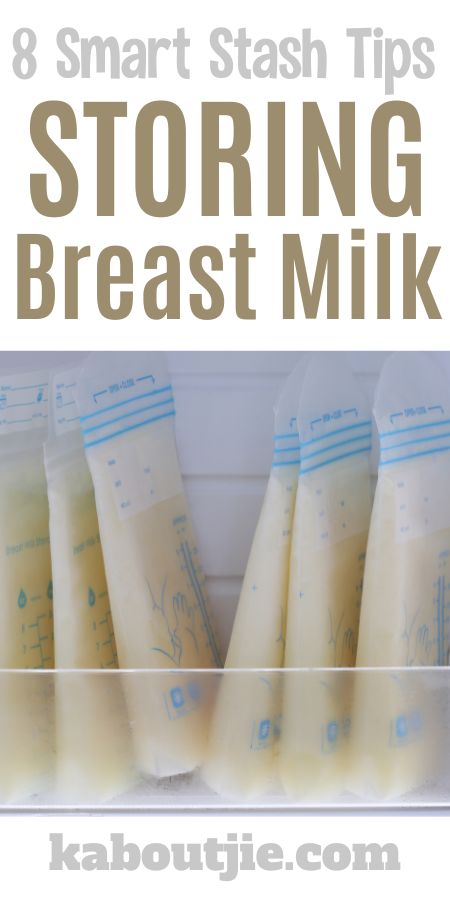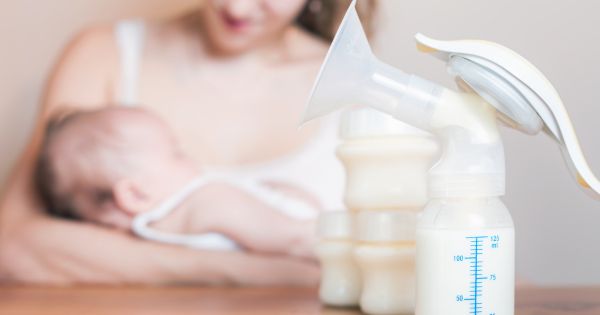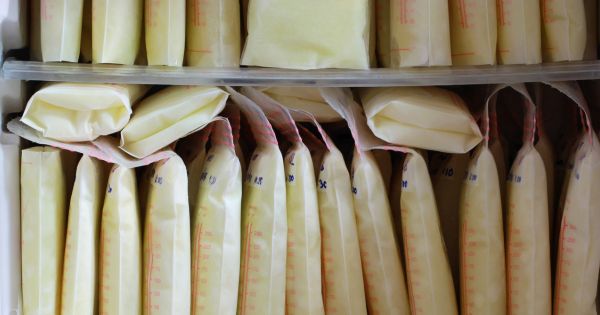Breast milk is like liquid gold for infants, providing essential nutrients and antibodies crucial for their growth and development. Whether you’re pumping milk for occasional use or building a stash for returning to work, proper storage is key to maintaining its quality and safety. Here are eight top tips for storing breast milk effectively.
***Disclosure -The links in this post may contain affiliate links and I may receive a small commission if you make a purchase after clicking on a link.***

Choose The Right Containers
Selecting appropriate containers is the first step in proper breast milk storage. Use BPA-free containers such as glass or hard plastic bottles designed specifically for storing breast milk. Alternatively, breast milk storage bags are convenient and space-saving, allowing you to lay them flat for efficient storage.
Label Everything
Labelling your breast milk containers with the date of expression is essential for maintaining freshness and ensuring proper rotation. Use waterproof labels and write the date to keep track of which milk to use first. This practice prevents wastage by using older milk before newer batches.

Optimal Temperature
Maintain the quality of your breast milk by storing it at the optimal temperature. Freshly expressed breast milk can be stored at room temperature (up to 25°C) for up to four hours. For longer storage, refrigerate it at temperatures below 4°C for up to four days. If you need to store it for an extended period, freeze breast milk at -18°C or below, where it remains safe for up to six months.
Practice Proper Thawing And Warming
When it’s time to use frozen breast milk, proper thawing is crucial to preserve its nutrients. Thaw frozen breast milk gradually by placing it in the refrigerator overnight or under cool running water.
Warming breast milk requires gentle handling to preserve its valuable nutrients and avoid hot spots that could potentially harm your baby. The safest method is to place the bottle of breast milk in a bowl of warm water or run it under warm tap water. Avoid using a microwave, as it can create uneven heating and destroy essential nutrients in the milk. Once the milk reaches the desired temperature, swirl the bottle gently to distribute the heat evenly. Always test the temperature of the milk on the inside of your wrist before feeding it to your baby, ensuring it’s lukewarm and not too hot. With this approach, you can safely warm breast milk while maintaining its nutritional integrity for your little one’s nourishment.
Maintain Hygiene
Maintain strict hygiene practices when handling breast milk to prevent contamination. Wash your hands thoroughly with soap and water before expressing or handling breast milk. Use clean pump parts and storage containers that have been sterilised properly. Avoid transferring milk between containers unnecessarily to minimise the risk of bacterial contamination.

Follow FIFO Principle
Adopt the “first in, first out” (FIFO) principle when using stored breast milk. Use the oldest milk in your stash first to ensure that none of it goes to waste. This rotation strategy ensures that your baby receives the freshest milk available while minimising the risk of spoilage.
Be Mindful Of Storage Location
Where you store your breast milk matters. Keep it away from direct sunlight, heat sources, and areas prone to temperature fluctuations. Avoid storing breast milk in the refrigerator door, as it experiences temperature fluctuations each time the door is opened. Instead, store it towards the back of the refrigerator or freezer, where temperatures remain more consistent.
Know When to Discard
While breast milk is incredibly resilient, it does have a shelf life. Be mindful of expiration dates and signs of spoilage. If breast milk develops an off smell or unusual colour, it’s best to discard it. Additionally, never refreeze breast milk that has been previously thawed, as it can increase the risk of bacterial growth.
Proper storage of breast milk is essential for preserving its nutritional value and ensuring your baby’s health and safety. By following these eight top tips, you can confidently store breast milk like a pro, providing your little one with the best possible nourishment. Whether you’re building a stash or pumping for occasional use, these guidelines will help you navigate the world of breast milk storage with ease and confidence.
 Kaboutjie SA Mommy Blogs by Lynne Huysamen
Kaboutjie SA Mommy Blogs by Lynne Huysamen





From the very start I aimed for a 6 month reserve should anything happen and I cant breastfeed anymore. I used the breast milk storage bags but they do work out quite expensive (they store very conveniently though). I lost all my milk, to our freezer not being closed properly, three times!!! The first time I felt like crying for days. Anyway, I ended up with enough stored milk to give to my girl for 3 months after I stopped breastfeeding and I’m glad I went this route. I also found it very helpful on the days she were super hungry and I just didn’t have enough to keep her happy.
My girl didn’t want to drink the milk if we left it to defrost over night and only drank it immediately after defrosting it in warm water.
So interesting never knew. So helpful for first time moms like me.
Such useful info – thanks so much! I was worried my b-pump was just gonna be a white elephant. Love this site 🙂
I wish I saw this last year when I have birth to my son….
Thanx for the helpful article. I always express my milk and this is very useful information. Love your articles xoxo
Thanks for this. I really wanna breastfeed my next baba and this will help for the future.
Wish I could do this… have bags and the Avent storage cups… its especially an awesome idea for moms who goes back to work and still want to give baby the best of the best
This is interesting. So much to do with your breastmilk. Didn’t know any of this. I’m a Sahm. But now I know I can express some milk for my baby. Maybe leave him by my mom/mom-inlaw when I go shopping. That way I get it done quicker. Thanks Lynne!
how many times do you need to clean/ sterilize an ICE CUBE holder when storing breast milk?
Did you guys know that you can donate some of ur breast milk to other babies that cant have milk, either they prem or thrown away babies. You can safe a baby’s life!
CAN BREAST MILK GO OFF?
*Research has compared formula to breast milk at room temperature. After 3 hours, there was evidence of microbiological growth on the formula. Amazingly, after 12 hours, there was no evidence of the breast milk having turned.
*No mom has yet complained of breast milk that has gone off. Rest assured though, baby will be able to detect a smell and will refuse to drink it.
*It can stand in room temperature for up to 4 hours during summer, and still be safe to drink.
I had and have anxiety about pumping. Maternity leave will come to an end in May. Will it be enough, will the carers be careful with it and not warm in the microwave, will baby drink it, will they mistakenly throw it away if she doesn’t finish it.. argh these thoughts aren’t helping with production.
Wow I never knew you could freeze breast milk that is super convenient